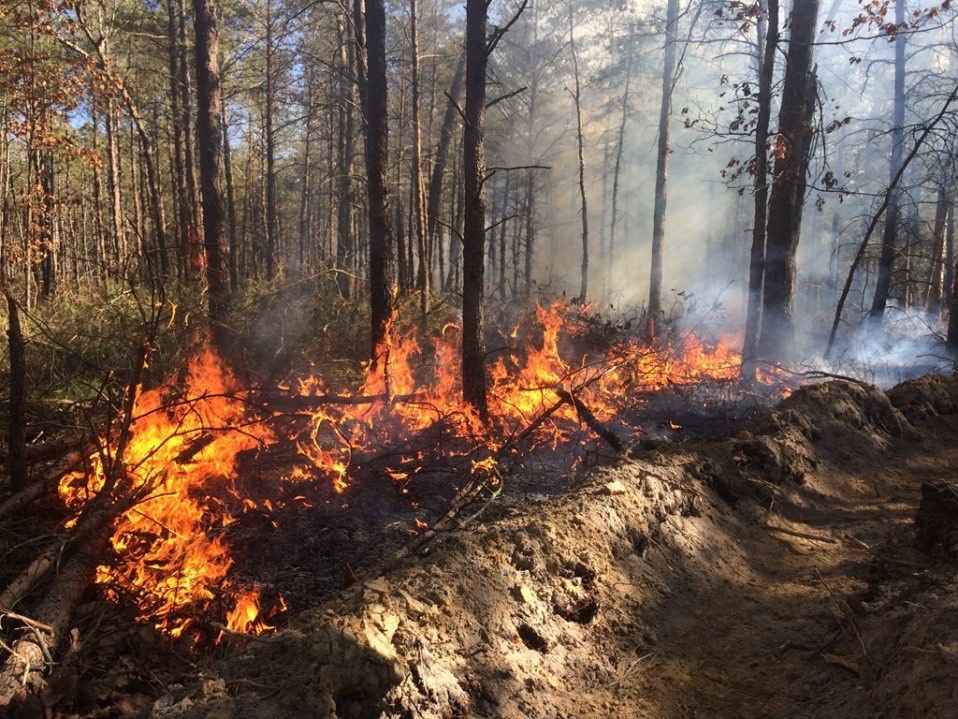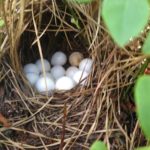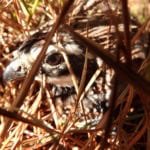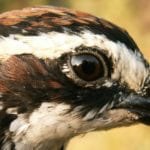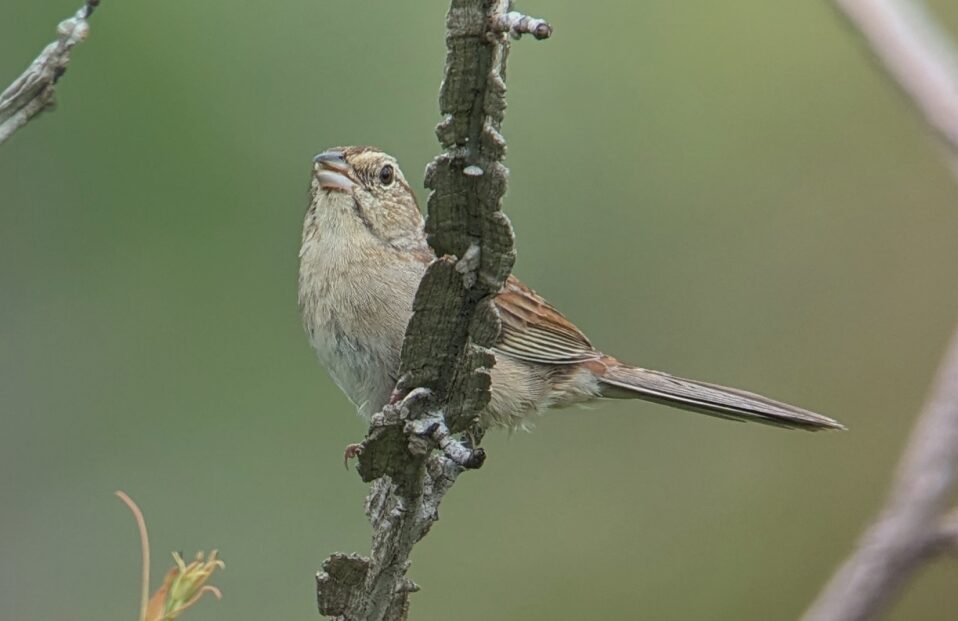As part of forest stewardship activities at the site of the Northern Bobwhite Restoration Initiative, prescribed fires are being implemented this winter as a tool to maintain forest health, habitat and to ensure public safety. Fire in the NJ Pinelands plays a vital role in the ecology of the region’s natural system, resetting the ecological clock, ensuring that early stages of succession are occurring and creating opportunities for new plant growth.
In the Pinelands, pines and other native vegetation typically cannot regenerate under a closed canopy, where the forest floor doesn’t receive enough light to stimulate growth. The closed canopy and buildup of pine needles and dead vegetation (duff) both obscure the forest floor from light and cover waiting seeds, preventing them from germinating. Forest fires, whether they are managed prescribed burns or wildfires, help stimulate new plant growth and reduce competition among existing trees and plants, allowing those that persist to grow bigger.
As with anything, different conditions dictate different conservation practices to maintain forest health and habitat. In the Pinelands, a lack of forest management and fire suppression has often contributed to excessive fuel loads and a thick forest overstory. Fire can’t just be reintroduced to the landscape without careful planning by experienced professionals, other conservation practices also need to be considered. In many instances the land needs to be pretreated before fire can be returned. Pretreating can mean the cutting of trees or removal of underbrush to create safe burning conditions, and, in many cases, this action helps to accelerate desired forest management outcomes.
“Fire is a natural process that is as important to the forest as rain, sunshine or water is,” says Certified Forester and owner of Pine Creek Forestry, Bob Williams. “However, fires and their results are extremely variable – time of year, time of day, fuel moisture, temperature, humidity, wind speed and fuel types all impact how a fire burns and behaves,” added Williams. “Yet all of these things change over time, as does the results of a given fire. One size does not fit all forests.”
As seen at the site of the Northern Bobwhite Restoration Initiative, many of the burns and other forestry practices implemented under the guidance of the Forest Stewardship Plan, written by Williams, have significant benefits for wildlife as well. For example, controlled burns and the associated forest thinning promote the growth of young forest and new annual plants that are potential forage and cover for wildlife. This new growth attracts a multitude of insects that are also food for wildlife and plant pollinators. Additionally, not as evident to the casual observer, but extremely important to the survival of the Northern Bobwhite (also known as “The Firebird”), the burning removes accumulated duff which then provides quail bare ground for brood-rearing habitat. The removal of this debris allows for quail chicks to move with ease through an area to feed or escape predation.
According to Quail Unlimited, “The greatest mortality of quail occurs in the first few weeks after hatch. Adequate brood rearing cover is critical. Soon after hatching, broods leave the nest and are cared for by one or both adults. The ground cover must be very open with only 30% to 50% vegetative coverage on the ground. This means that, as much as 70% can be bare ground, but still must possess overhead protection.”
Studies have shown that freedom of movement at ground level with overhead concealment is essential for quail chick survival. Additionally they must have access to a diverse mixture of plants that are within feeding height (about 2-3 inches high). It’s these fresh grasses, forbs, and hard-seeded legumes that, stimulated by the burning, increase their production of seeds and attract insects like beetles, leafhoppers, ants and other arthropods that for a quail chick, compose almost its entire diet for the first few weeks. Additional research is also indicating that burned woodlands rival fallow fields for insect production, and quail cannot be raised without good quality brood rearing habitat containing high insect densities.




